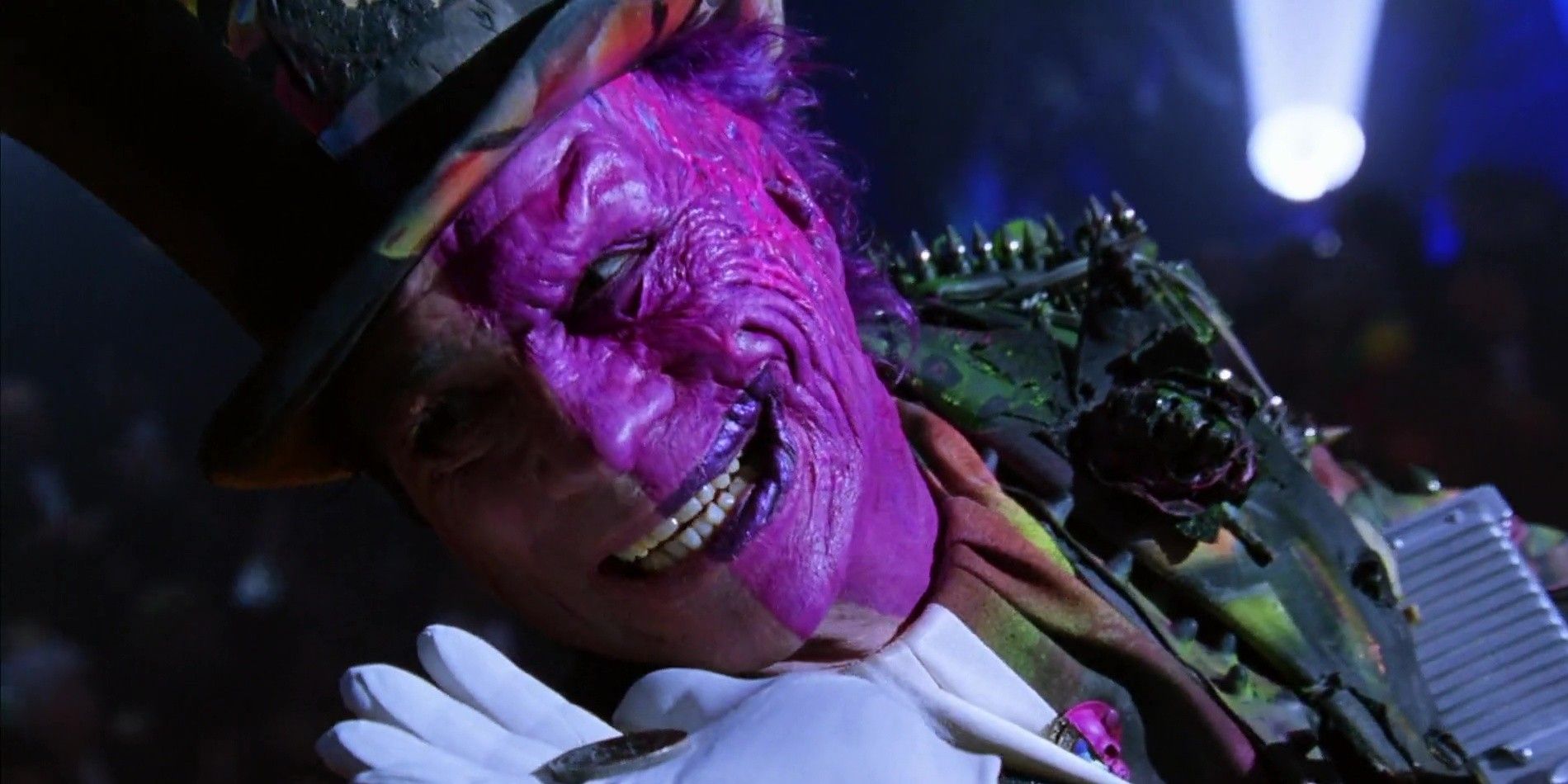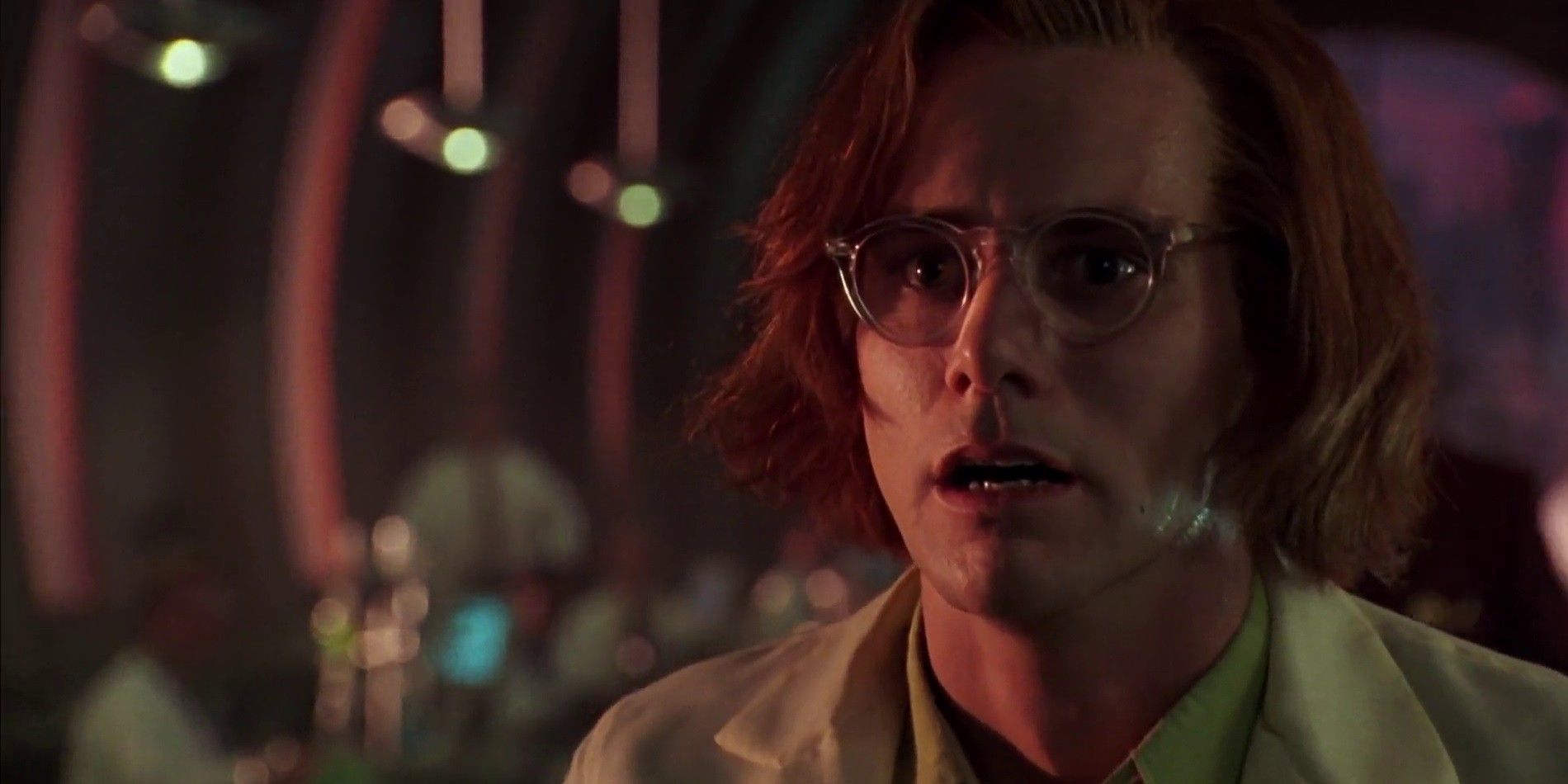
The biggest problem with Batman Forever isn't its curious tone swerve or the whole-sale rejection of what Tim Burton did in the two preceding Batman movies, it's an identity crisis far more specific than that. Fundamentally, in Batman Forever, newly recruited villains Tommy Lee Jones and Jim Carrey both tried to play the Joker. The film is haunted by the ghost of Jack Nicholson's iconic movie villain as the two bad guys ended up looking like confused cosplays of Batman's arch-nemesis.
On the back of Batman Returns' release, Warner Bros were forced into a change of direction - in both senses - as pressure from merchandising partners and anxiety over maximizing earning potential led to the rejection of Tim Burton's gleefully grotesque image of Gotham. But there was a problem for Warner Bros. because both Batman and Batman Returns made money and fans. The sequel perhaps less so, but it was still a lucrative movie, and to reject both entirely would be to risk alienating an entire audience.
To reboot at that stage would have been illogical, so Batman Forever was presented as a sort of soft sequel, continuing on the same timeline, but avoiding mentioning the past overtly at all cost, unless entirely necessary. But for the studio to make sure they could still call on the fans of Burton's Batman movies, they entrusted incoming director Joel Schumacher with an agenda to make his Batman different but to keep the parts that worked. He was told to jettison anything that would lead to embarrassing situations like McDonald's pulling their Happy Meal tie-in to Batman Returns but retain the more marketable elements.
Watching Batman Forever back now, it's impossible not to think that what he most held on to - other than the strange, circus aesthetic that he daubed with a sort of Day-Glo Lost Boys vibe - was the importance of giving Batman fans their Joker. He was, after all, Batman's balance and his most recognizable and iconic enemy. That had worked for Burton in 1989's Batman, but he'd inconveniently killed the Clown Prince Of Crime off and instead of proposing a seance (as he would later for the canned Batman Triumphant), Joel Schumacher's only option was to replace in kind. The solution - and the biggest cause of Batman Forever's identity crisis - was to have his two villainous characters, Two-Face and The Riddler, played as if they were de facto Jokers. Clown clones. Crucially, though, neither The Riddler nor Two-Face are the Joker and neither Jim Carrey nor Tommy Lee Jones had any right playing them as such and it shows.

Two-Face is the most egregious of the two. Seeing Tommy Lee Jones (replacing Billy Dee Williams) cackle from above the circus top as he makes his attempted escape or ordering his goons in their harlequin masks around is all so terribly only on the clown nose. He even has two Harley Quinn stand-ins in the shape of Sugar and Spice. And as if to over-egg the parallel, while the film does show his origin in the courtroom, there's no sense of the dichotomy and conflict of the character nor of his inherent tragedy. It's no more than a copycat transformation scene, like the one that sees Jack Nicholson's grotesque Joker emerge from his post-Ace Chemicals surgery. This creation is an interesting enough one in itself, but you can't just call it Two-Face and expect fans to ignore the fact that he's entirely unrecognizable from the comic book character.

And then there's Jim Carrey's jester-like Riddler, who frustratingly has kernels of the real deal in there - like his desire to prove he's better than Bruce Wayne - but who is way more Napier than Nygma. Where the comic book original Riddler was more like a chess master manipulating his foe, Carrey's version is the kind of villain who despatches an enemy by throwing them out of a window. It's hardly subtle. He is a malevolent showman whose fundamental drive feels more capitalist than anything in the pursuit of individual bragging rights, which feels like an essential misunderstanding.
The result is that Batman Forever feels like it's trying to stride out away from what came before, but which is patently anchored by that which it seeks to avoid. And worse, it gives the unfortunate, reductive impression that Batman's Rogues Gallery is so limited that the only option was to copy and paste Jack Nicholson's Joker rather than letting The Riddler and Two-Face do their own thing. You can't really fault the performances, as either would have made a fine Joker in some alternate universe, but they were handed the wrong character blueprints in the name of recapturing some old glory. In a film that is often a needless punchbag, it's one glaring mistake that you just can't gloss over.
from ScreenRant - Feed https://ift.tt/2E0Y8Vo


0 Comments